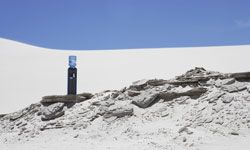Like most people, your post-apocalyptic fantasy probably involves a move to the local shopping mall, where you'll lash your skateboard to a pack of zombies, tuck a samurai sword into the belt of a pilfered tuxedo and subsist on a steady diet of food court pizza and video games.
Wake up, man! You're not thinking like a survivor. You're thinking like all the other post-apoc losers who -- guess what -- eventually devolve into the very roving bands of deranged marauders they'd hoped to evade.
Advertisement
If you really plan to survive the apocalypse -- be it nuclear, biologic, environmental or cosmic -- you'll want to study up on your tree hugging and know exactly what sort of green products to loot when law and order collapse into half-naked, chainsaw-lobbing chaos.
So seriously, print this article out. Fold it and tuck it into your shorts with all the other HowStuffWorks apocalypse survival articles. Whether the world ends with a bang or a whimper, it'd be nice to have clean drinking water.






